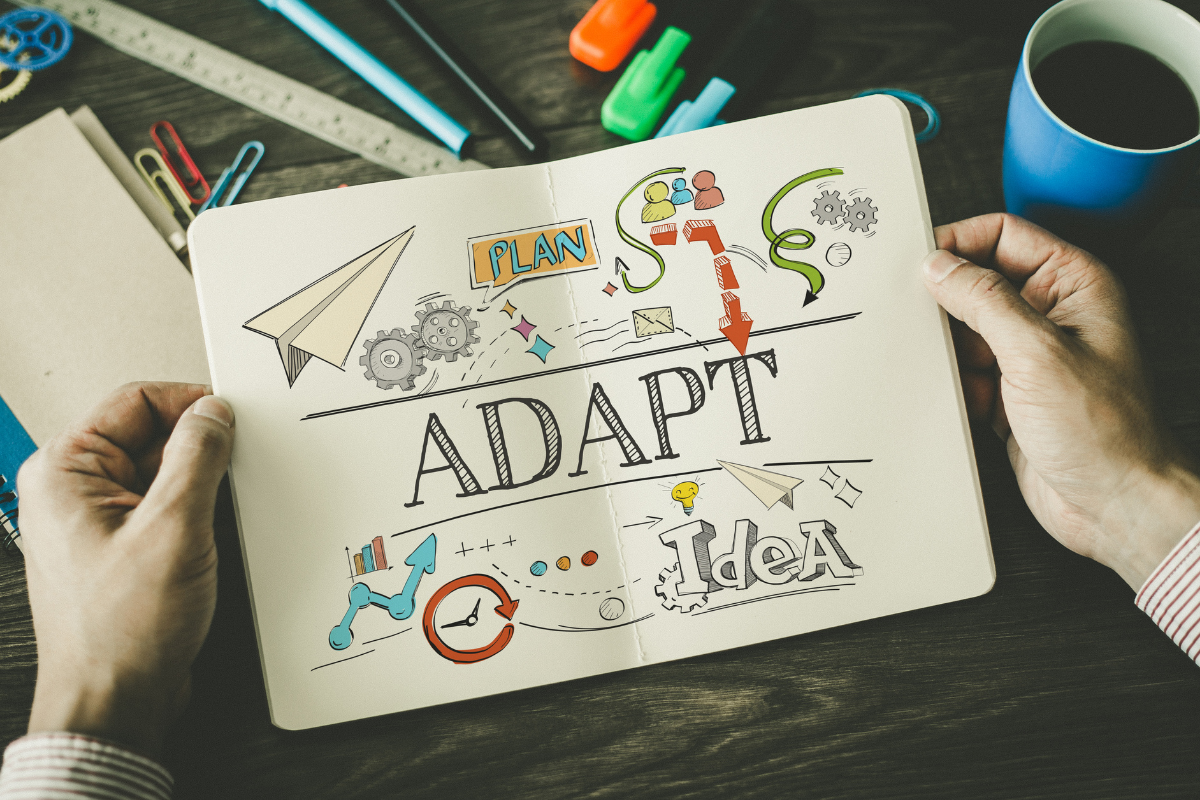Business owners have a shocking number of responsibilities on their plates in their day-to-day journeys to success. There are just so many moving parts in the hustle and bustle of running and growing a successful company. Particularly in small business ownership, key accountabilities are vast and vital, including operational oversight, financial management, hiring and HR, sales and marketing, customer relations, strategic planning, compliance and legal issues, networking and customer development, technology, and risk management. Whew. And this exhaustive list is just the tip of the iceberg. Business owners must master such a diverse set of essential skills, accountabilities, and oversights, that once they establish a viable rhythm, it can be challenging to look beyond the here-and-now to ever consider changing course. But even the best businesses need to adapt, or they risk becoming obsolete.
There are many cautionary tales of big, successful businesses that failed to adapt to changes in the market and paid the price. Of course, Blockbuster first comes to mind. For years, the video rental company was a behemoth in the industry with its familiar blue and yellow signage bordering on ubiquitous. Blockbuster’s business model was tried and true – that is until more innovative competitors like Redbox and Netflix came along. Let’s be clear. It wasn’t the competition that led to Blockbuster’s demise, but rather the company’s inability or unwillingness to adapt its business model to address the evolving market, technology, and customer preferences.
Similar fates befell other industry giants like Borders, Tower Records, and Toys R Us. And these are just some of the big brands you are familiar with. Now consider all the SMBs you have never heard of and never will. According to the U.S. Bureau of Labor Statistics, 70% of small businesses shutter within 10 years of launch. Almost certainly, every one of those business owners believed they had a viable company with desired goods or services and an opportunity to thrive. However, the marketplace is a constantly evolving arena that requires a willingness to embrace innovation and adapt to competitive challenges.
Five Strategies to Enhance Adaptability in Your Business
Adaptability is truly the secret sauce of every organization, big or small, that enjoys long-term success. Looking back on the Covid years, the number of permanent business closures due to the pandemic was shocking, though not surprising. The general advice at the time was to urge struggling companies to pivot their business model or services. Easier said than done, particularly for those organizations that never had the desire or the need to do things differently.
As a business owner, you can’t just snap your fingers and expect to run a more innovative, agile, and adaptable business. It takes insight. It takes creativity. It takes work.
The following are five hands-on strategies to embrace adaptability and become a more resilient, forward-thinking business:
-
- Commit to Continuous Learning: Find and implement educational opportunities for you and your employees. Invest in training programs, and encourage your team to be knowledge-seekers and insight-sharers. Also, research your competitors to learn how their approaches and services might differ from your own.
-
- Foster Strategic Partnerships: Collaborate with other businesses to identify and leverage complementary strengths. These strategic alliances can drastically increase your company’s ability to creatively adapt to market changes.
-
- Develop Future Leaders: Leadership development programs don’t just teach managerial skills and foster alignment, but also infuse the business with new voices and fresh ideas. Cultivating these future leaders also provides an advanced opportunity for business owners to strategize at a more innovative level, thanks to leadership task delegation and better-distributed accountabilities.
-
- Talk to Your Customers: Engage with your customers and regularly request feedback on how your goods or services are meeting, exceeding, or falling short of expectations. What do they want now and how might their preferences change moving forward? Leverage these customer insights for new product development, marketing initiatives, and growth strategies.
-
- Build a Culture of Innovation: Foster an environment that celebrates new ideas, experimentation, and creativity within your team. Encourage curiosity and innovative problem-solving. Maintain an open-door policy or other hands-on opportunities for your team to share their fresh perspectives with you.
We would love to hear your comments. Please contact us today!
Gary Brunson
gary@myclearfocus.com
Debra Rider
debra@myclearfocus.com
574.361.2674
Sustainable Growth & Profit Consultant, Coach, Mentor, and Counselor/Therapist for Business Owners and Professionals.


